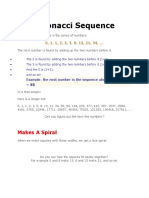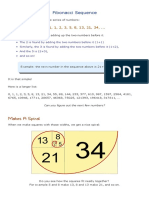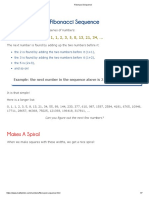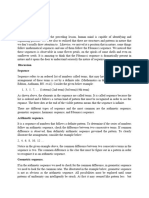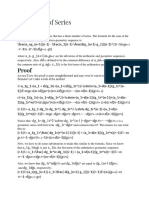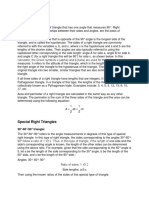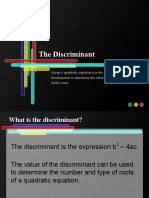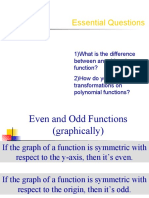0% found this document useful (0 votes)
216 views1 pageWhat Is Fibonacci Sequence
The Fibonacci sequence is a series of numbers where each subsequent number is the sum of the previous two. It begins with 0 and 1, and each new term is generated by adding the prior two terms. For example, the third term is 1 (0 + 1), the fourth is 2 (1 + 1), and the fifth is 3 (1 + 2). The Fibonacci sequence follows the recursive formula Fn = Fn-1 + Fn-2, where the first 20 terms are explicitly listed.
Uploaded by
Ana May BanielCopyright
© © All Rights Reserved
We take content rights seriously. If you suspect this is your content, claim it here.
Available Formats
Download as PDF, TXT or read online on Scribd
0% found this document useful (0 votes)
216 views1 pageWhat Is Fibonacci Sequence
The Fibonacci sequence is a series of numbers where each subsequent number is the sum of the previous two. It begins with 0 and 1, and each new term is generated by adding the prior two terms. For example, the third term is 1 (0 + 1), the fourth is 2 (1 + 1), and the fifth is 3 (1 + 2). The Fibonacci sequence follows the recursive formula Fn = Fn-1 + Fn-2, where the first 20 terms are explicitly listed.
Uploaded by
Ana May BanielCopyright
© © All Rights Reserved
We take content rights seriously. If you suspect this is your content, claim it here.
Available Formats
Download as PDF, TXT or read online on Scribd
/ 1


